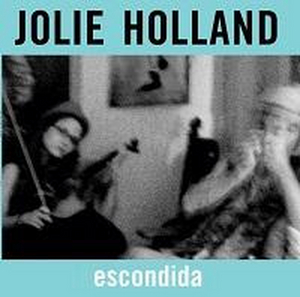Jolie Holland Will Re-Release 'Escondida' For the First Time

Critically acclaimed singer / songwriter Jolie Holland is releasing ESCONDIDA on vinyl for the first time in honor of its 15 year anniversary. Escondida will be pressed on 140 gram double vinyl at 45rpm for optimum audio quality via her own small-imprint label, Cinquefoil Records. Remastered by Adam Gonsalves at Telegraph Audio in Portland, Oregon. She is currently raising funds to finance the re-issue via an album pre-sales campaign and other offerings hosted on her website.
Aside from the album and regular merch like T-shirts and etc, Holland has some very special offerings including the 72 year-old guitar she played while touring in celebration of Escondida. You can support the reissue by purchasing handwritten lyrics, private command performances, coaching for songwriters, and even by having Jolie call you and tell you one of the hundred or so real ghost stories she has collected since she was a teenager. (Jolie is now working on an illustrated book of these stories with the great illustrator Tony Millionaire.)
Also available are shirts, totes, magnets and postcards that use elements of Escondida's original artwork, including the Lunatic Tarot deck designed by Stefan Jecusco. Jolie is offering the complete deck to the public for the first time, along with a booklet that explains how to interpret the cards. Check out the campaign perk levels for other promotional offers including a brand new high-quality record player signed by Holland.
"As you know, its expensive to release an album without the help of a major label, so I'm very grateful for your help. THANK YOU from the depths of my heart," she explains.
Upon its original release on the trendsetting Anti label, Escondida created an immediate sensation embraced by NPR and influential music journalists around the globe. It catapulted her from playing for spare change on the street to headlining prestigious venues the world over and would be followed by four more highly praised solo albums.
Escondida was Jolie Holland's first full length studio recording. It was self-produced, engineered by Lemon DeGeorge who had just been nominated for an Academy Award for his work on the documentary Genghis Blues. Most of the sessions were done at In The Pocket recording studio far out in the woods outside of Forrestville, CA; one track was recorded at DeGeorge's Crib Nebula in SF. Sessions moved quickly - a mere four and a half days - due to a tight budget.Comments
Videos

